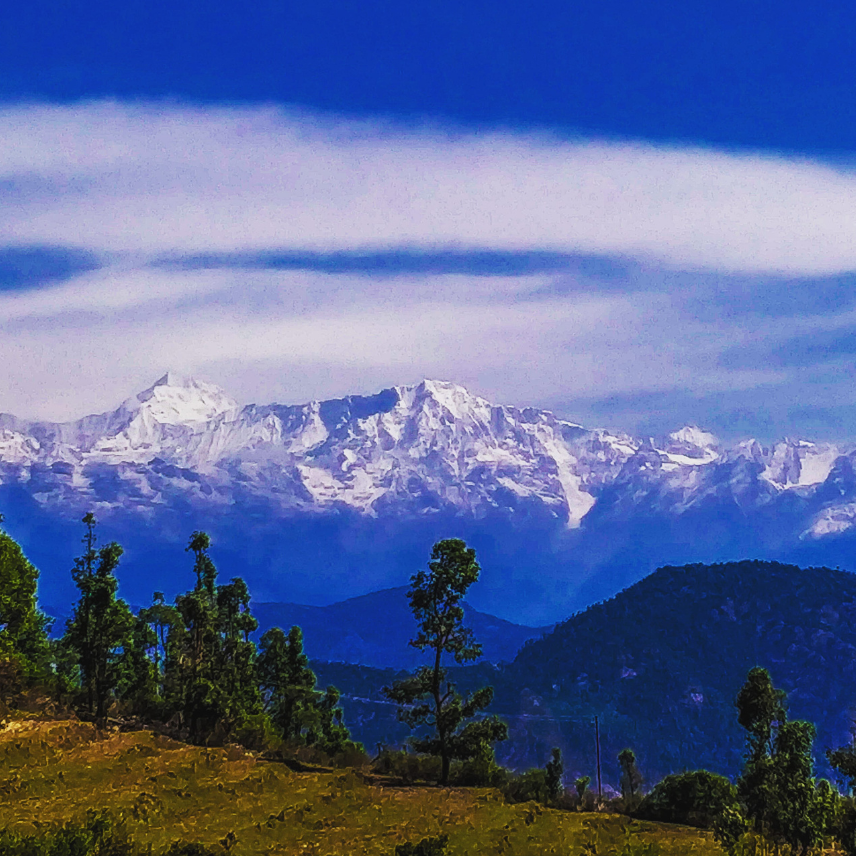Nestled in the heart of the Himalayas, Nanda Devi National Park is a mesmerizing destination for adventure enthusiasts and nature lovers alike.
Along with the famed Valley of Flowers National Park, it forms the core zone of the Nanda Devi Biosphere Reserve, a UNESCO World Heritage Site. The park is home to stunning vistas, rich biodiversity, and a challenging yet rewarding trekking route that captures the essence of pristine wilderness.
If you're looking to escape into a world of untouched beauty, alpine meadows, snow-clad peaks, and dense forests, the Nanda Devi National Park Trek offers an unmatched experience. The trek is particularly recommended from late August to early September when the monsoon's intensity subsides, and the area bursts into life with lush greenery and vivid wildflowers.
Trek Highlights
-
Diverse Flora
Trekking through the Nanda Devi National Park takes you across thick forests of rhododendron, birch, and juniper trees. During the late monsoon season, the region is adorned with vibrant colors, and the flowers in full bloom add an ethereal charm to the already stunning landscape. -
Wildlife Encounters
The park is a haven for wildlife enthusiasts, home to a diverse array of fauna. If you're fortunate, you may catch glimpses of the rare musk deer, black bear, blue sheep, and even the elusive snow leopard. The biodiversity in the region makes the trek all the more exciting as every step through the park could lead to a potential wildlife sighting. -
Majestic Peaks
One of the trek's main attractions is the panoramic view of the towering Himalayan peaks. The moderately challenging trek rewards you with stunning sights of Bethartoli, Dunagiri, Changabang, Trishul, Nanda Devi East, and Nanda Devi West. These snow-clad peaks are nothing short of a visual treat, and they provide a majestic backdrop to your trekking experience.
Best Time to Trek
While the park remains closed during peak monsoon and winter due to safety concerns, the ideal time for this trek is from late August to early September. During this period, the weather is pleasant, and the monsoon rains have reduced, making the trek more comfortable. The greenery is at its peak, and the wildlife is more active, giving you a chance to see the park in its full glory.
Trekking Difficulty
The Nanda Devi National Park Trek is classified as moderately difficult. The trail offers a mix of steep ascents, rocky terrain, and high-altitude conditions. While it doesn't require technical mountaineering skills, a good level of fitness and endurance is essential to complete the trek.
Things to Keep in Mind
-
Permits:
Since Nanda Devi National Park is a protected area, you’ll need to secure permits before starting your trek. These can usually be arranged through authorized trekking agencies. -
Guides and Porters:
It's highly recommended to hire experienced guides who are familiar with the region’s terrain and weather conditions. Porters can also help carry equipment, making your trek more manageable. -
Essentials:
Pack trekking gear suitable for high-altitude trekking, including a warm sleeping bag, waterproof clothing, sturdy hiking boots, and other essentials like trekking poles, sunscreen, and a first-aid kit.
Conclusion
Embarking on the Nanda Devi National Park Trek is not just about reaching a destination but about the journey itself. The combination of awe-inspiring mountain views, rich flora and fauna, and the sense of adventure makes this trek one of the most rewarding experiences in the Indian Himalayas. Whether you are an experienced trekker or a nature enthusiast, this trek will leave you with memories of the untouched beauty of the Himalayas that will stay with you for a lifetime.



